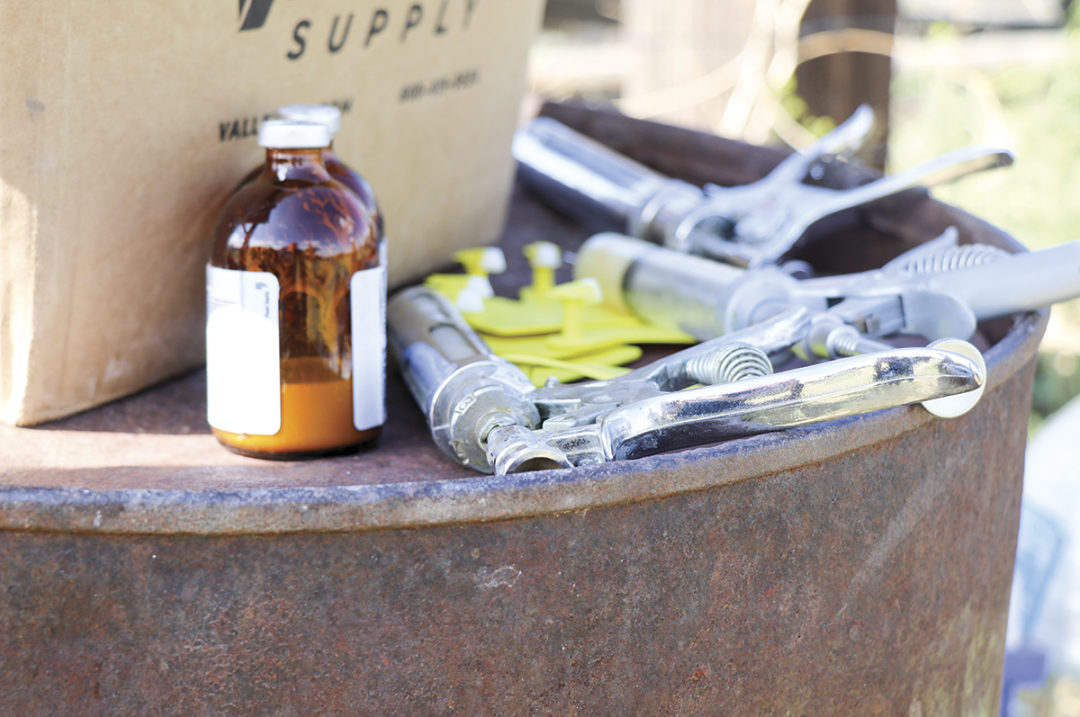All vaccine types can help set cattle up for success when used according to label directions, but which type makes the most sense for your herd? Understanding the key differences between vaccine types can help you create a safe and effective vaccination program that matches the disease exposure risk for cattle on your operation.
In general, there are three vaccination types: modified-live, killed and hybrid (contains killed and modified-live components).
Modified-live vaccines (MLV) contain non-disease-causing versions of a virus or bacteria. These vaccines don’t produce clinical disease within the animal but still provide a strong immune response through replication of the virus or bacteria contained within the vaccine. Modified-live products will often come in two separate vials which require mixing prior to administration.
The main benefits of modified-live vaccines are longer duration, more comprehensive immunity and the fetal protection offered in reproductive vaccines. In addition to protecting the cow from reproductive diseases prior to and during gestation, the use of modified-live vaccine at pre-breeding can also protect her calf prior to birth from bovine viral diarrhea persistent infection (BVD-PI) and abortion caused by infectious bovine rhinotracheitis (IBR).
Because of greater efficacy offered, a MLV program makes sense for many herds. These herd scenarios include but are not limited to:
- Herds that are commingled or have shared fencelines
- Herds with purchased cattle that aren't BVD-PI tested
- Herds with new cattle brought in several times per year
Something else to consider is that the vaccine type chosen for the cows will influence the options available for calves. Most respiratory vaccines used in calves are modified-live vaccines, due to the more rapid, stronger and longer-lasting immunity offered. However, modified-live vaccines can only be safely used in calves nursing pregnant cows if the cows have been properly vaccinated with an MLV prior to breeding and according to label directions.
Killed vaccines do not contain a live virus or bacteria, so no replication occurs. Instead, these vaccines contain a dead organism or a piece of the organism that promotes the onset of disease. Killed vaccines often require a booster for cattle to develop adequate immunity.
Killed vaccines can be given to any cow at any stage of pregnancy, so the biggest benefits are safety and convenience. However, the drawback of killed vaccines is that there is often no fetal protection offered.
Killed vaccines are typically recommended in the following scenarios:
- Herds with purchased heifers and cows that have unknown vaccination history
- Closed herds with retained replacement heifers
- Herds with purchased cattle that are negative for BVD-PI
- Herds that practice ongoing BVD-PI testing along with biosecurity measures
Hybrid vaccines contain both modified-live and killed fractions. These vaccines incorporate unique virus strains to offer producers the “best of both worlds” when it comes to efficacy and safety.
The value of working with your local veterinarian
Vaccines are a small but critical part of a successful herd management program. Too often, protocols are based on convenience rather than efficacy. That’s why I highly recommend consulting your herd veterinarian when looking at tweaks to vaccination protocols. He or she can help evaluate the level of disease risk based on several factors – including herd location, purchasing decisions and biosecurity measures in place – to design vaccination protocols with greater efficacy.
Four ways to improve vaccine effectiveness
No matter the vaccine type you choose, proper handling and storage are critical to provide cattle with adequate protection against disease. Here are a few basic, but important, vaccine best management practices to keep in mind.
- Mix only what you need. Modified-live vaccines are at their very best immediately after mixing, so it’s important to mix only one bottle at a time. Time, heat and sunlight all work to degrade the vaccine after it’s mixed. Don’t mix more than you will use within an hour for best results.
- Designate syringes for modified-live vaccines. These syringes should only be cleaned with hot water, as any residue left from soaps or disinfectants may kill the viruses in the vaccine.
- Clean transfer needles each time – or use disposable transfer needles.
- Ensure vaccines are stored at 35ºF to 45ºF. The variability in refrigerator temperature may be surprising. Keep a thermometer near the vaccines in the refrigerator and record the temperature at different times throughout the day to make sure vaccines are stored according to label directions. Avoid storing vaccines in the door or at the back of the refrigerator to limit the risk of temperature variability or freezing.









